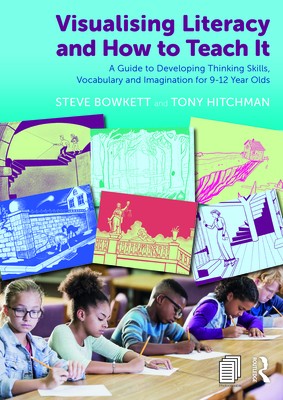
- We will send in 10–14 business days.
- Author: Steve Bowkett
- Publisher: Routledge
- ISBN-10: 1032025794
- ISBN-13: 9781032025797
- Format: 17.4 x 24.6 x 1 cm, minkšti viršeliai
- Language: English
- SAVE -10% with code: EXTRA
Reviews
Description
Technological advances and the way young people interact with them means children are thinking and processing information in an increasingly visual manner. Visualising Literacy and How to Teach It recognises that many, if not most, children are attracted to visual images and uses this as a basis for introducing and developing a range of thinking skills and strategies for learning. This practical resource offers a selection of visuals, each accompanied by activities that give children practice in using their imaginations in different ways.
Visualising Literacy and How to Teach It not only explores creative and critical thinking skills but also pays close attention to the overarching thinking skill that we call imagination. The book contains around 150 practical activities that develop children's imaginations, focussing on a range of thinking skills, including but not limited to the following:
- developing observational/attentional skills
- noticing details (focussing of attention)
- assimilating visual information
- increasing experience of inferential thinking, speculation, dealing with generalisations
- boosting vocabulary
- empowering one's attitude towards exploring ideas
- learning different questioning techniques
- increasing the ability to empathise
- becoming comfortable with uncertainty and ambiguity
Many of the visualisation techniques can be applied to developing different aspects of emotional resourcefulness, including empathy, positive self-image, anchoring positive thoughts and modifying negative thoughts and feelings. This is, therefore, an essential resource for any teacher or education professional who is keen on developing children's ability to think and express their own ideas.
EXTRA 10 % discount with code: EXTRA
The promotion ends in 21d.12:01:09
The discount code is valid when purchasing from 10 €. Discounts do not stack.
- Author: Steve Bowkett
- Publisher: Routledge
- ISBN-10: 1032025794
- ISBN-13: 9781032025797
- Format: 17.4 x 24.6 x 1 cm, minkšti viršeliai
- Language: English English
Technological advances and the way young people interact with them means children are thinking and processing information in an increasingly visual manner. Visualising Literacy and How to Teach It recognises that many, if not most, children are attracted to visual images and uses this as a basis for introducing and developing a range of thinking skills and strategies for learning. This practical resource offers a selection of visuals, each accompanied by activities that give children practice in using their imaginations in different ways.
Visualising Literacy and How to Teach It not only explores creative and critical thinking skills but also pays close attention to the overarching thinking skill that we call imagination. The book contains around 150 practical activities that develop children's imaginations, focussing on a range of thinking skills, including but not limited to the following:
- developing observational/attentional skills
- noticing details (focussing of attention)
- assimilating visual information
- increasing experience of inferential thinking, speculation, dealing with generalisations
- boosting vocabulary
- empowering one's attitude towards exploring ideas
- learning different questioning techniques
- increasing the ability to empathise
- becoming comfortable with uncertainty and ambiguity
Many of the visualisation techniques can be applied to developing different aspects of emotional resourcefulness, including empathy, positive self-image, anchoring positive thoughts and modifying negative thoughts and feelings. This is, therefore, an essential resource for any teacher or education professional who is keen on developing children's ability to think and express their own ideas.


Reviews